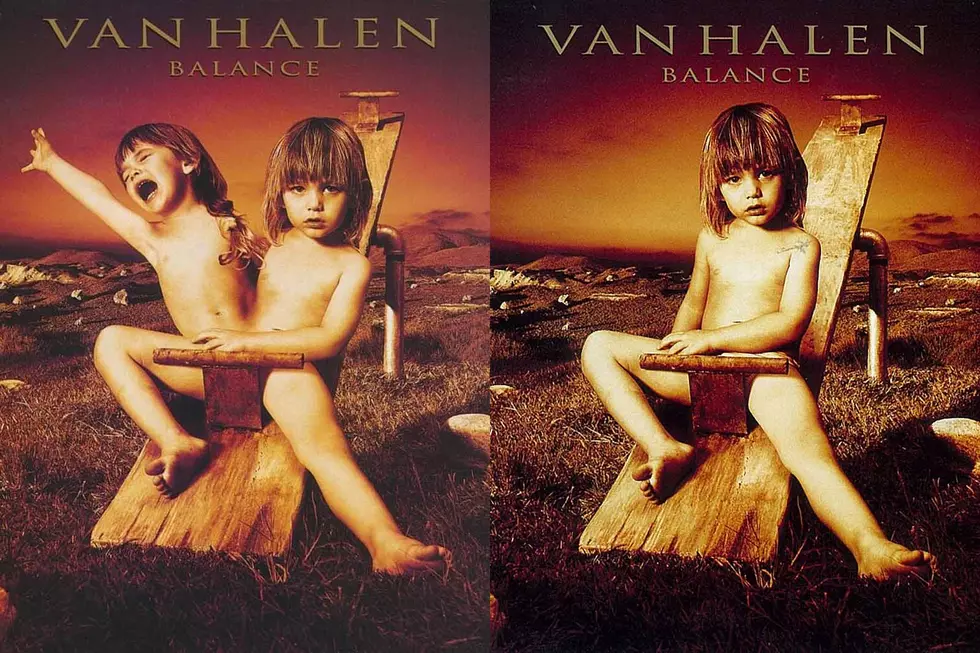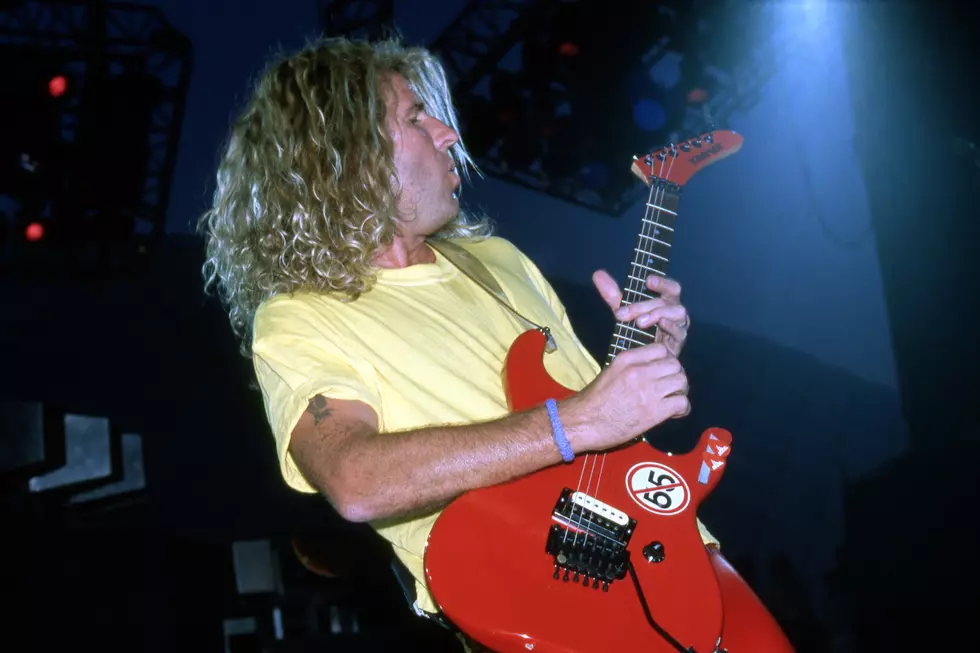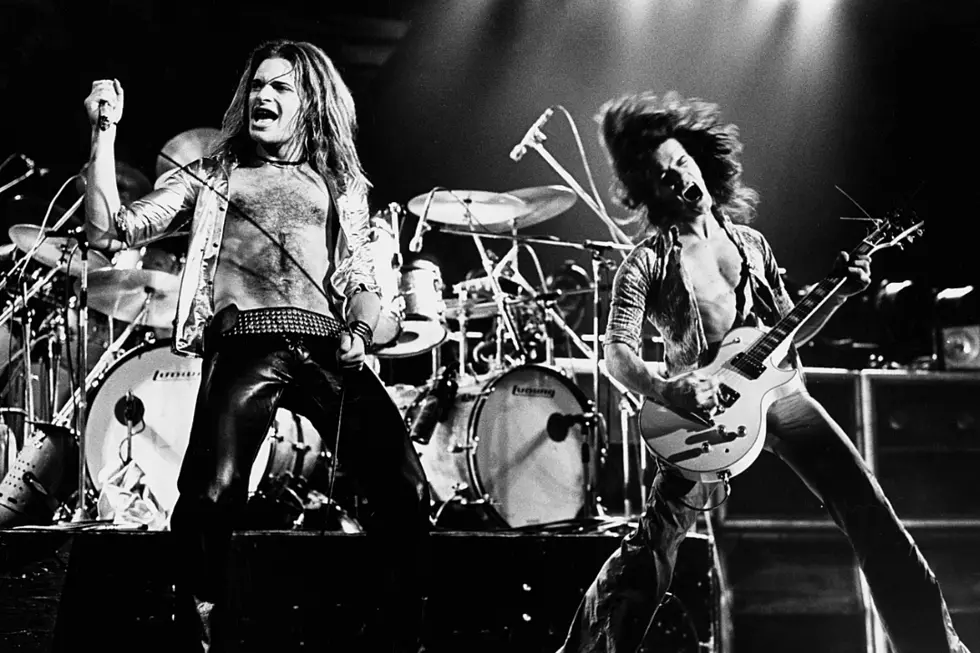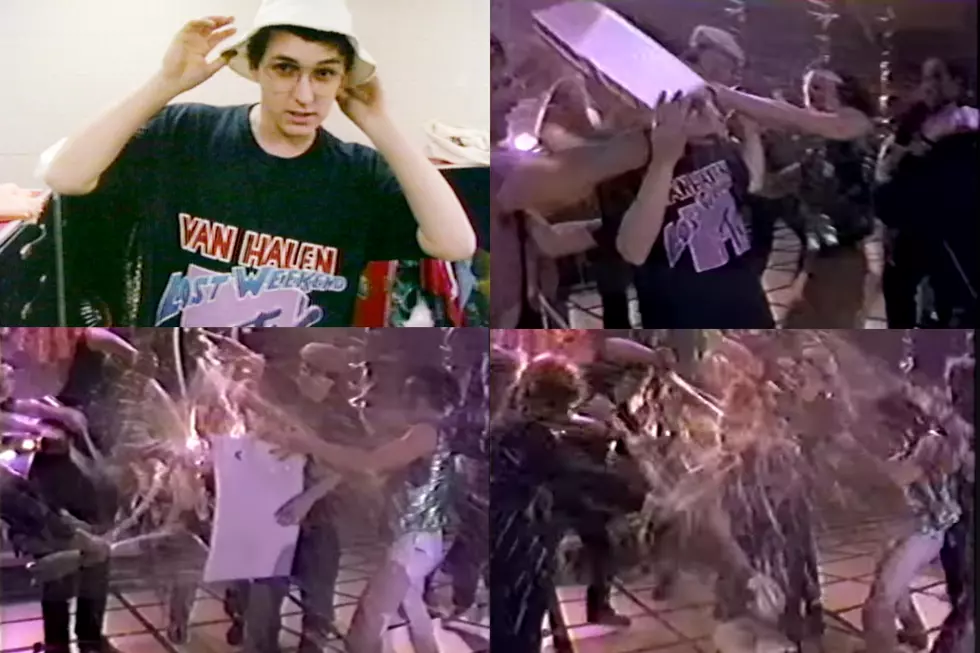
How Van Halen’s ‘Balance’ Album Art Foreshadowed the Band’s Split
Van Halen's 1995 album, Balance, was a bit of a departure for the band, foreshadowing the end of their Sammy Hagar era. And their choice in cover art reflected that new tone.
Glen Wexler, who previously worked on the group's For Unlawful Carnal Knowledge cover, was brought in again. As he told Resource, the album was originally to be called The Seventh Seal, and Wexler had a few ideas involving an androgynous four-year-old boy he had cast (not Eddie Van Halen's son Wolfgang, as has been rumored). But then the title was changed to Balance, representing the band's own quest for internal harmony — which had been increasingly difficult.
Alex Van Halen told Wexler that the new title referenced the group's turmoil at the time, including the death of manager Ed Leffler, who'd previously been a stabilizing presence for the band. Recording the LP had been a frustrating experience, as they struggled to click creatively. Eddie and Hagar famously disagreed on multiple topics: The newly sober guitarist, seeking a deeper direction, complained about the frontman's party-centric lyrics to "Amsterdam," and he was frustrated that Hagar couldn't come up with lyrics or a melody to the "Baluchitherium" instrumental.
Eddie became so exasperated during the sessions that he cut off his hair — a jarring change that surprised fans after years of sporting a long mane. (Hagar appears to reference that hair alteration on the album's closer, "Feelin'," singing, "Grow it long, shave it off / Life is hard, never soft / I need a change, I need it quick / Before it makes me sick / That's what on my mind."
Van Halen did — just barely — table their differences enough to finish the album, their last full project with Hagar. And perhaps fittingly, given the circumstances, Alex wanted artwork that explored "the duality of the human psyche." That idea struck Wexler as intriguing, given Van Halen's reputation as a "fun-loving party band."
The photographer ultimately came up with a concept where the child model he hired would play fraternal conjoined twins on a seesaw.
"Other than the obvious expression of inseparable male and female characteristics," he continued, "the realization of the idea began to focus on a number of ironies: the impossibility of the conjoined twins actually playing on the seesaw; the 'calm' twin actually being the aggressive one, pulling the hair of his sibling to create the appearance of an aggressive child; and having no one else to play with in a desolate post-apocalyptic setting, in which unusable playground equipment is the only object in sight."
In a further nod to subtlety, the twins would form an approximation of the Van Halen logo.
The set was constructed at Wexler's Hollywood studio, and the theme of duality was inadvertently played out during the shoot. The boy had no problem with the scream. Wexler simply told him to "roar like Simba from The Lion King," but getting him to sit still was more of a challenge. Wexler's five-year-old daughter helped calm him down — and also served as the hand model for the hair-pulling.
Wexler also dispelled the notion that an alternate cover created for the Japanese market, which removed the conjoined twins concept, was the result of censorship. He said he knew in advance that the depiction of human deformities was a cultural stigma in Japan and therefore created the second one before there could be any controversy.
Van Halen Album Art: The Stories Behind 14 Different Covers
More From Ultimate Classic Rock









